Tetragonal (4mm); Space Groups
Steven Dutch, Professor Emeritus, Natural and Applied Sciences,
Universityof Wisconsin - Green Bay
To the right of each space group is a listing of coordinate points. These are thecoordinates to which a general point (x,y,z) is transformed by the space group. Origins(called "equivalent points" in the International Tables), areadditional points around which the points are transformed. For example, (0,0,0) refers toa corner of the unit cell, (1/2,1/2,1/2) to the center. All space groups have origin(0,0,0). For a space group with an additional origin (1/2,1/2,1/2), point (x,y,z) is alsotransformed to (1/2+x,1/2+y,1/2+z) and so on.
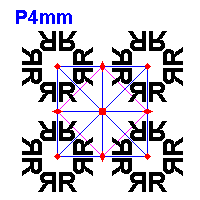 |
99 p4mm (+x, +y, +z); (-x, -y, +z); (-x, +y, +z); (+x, -y, +z); (+y, +x, +z); (-y, -x, +z); (-y, +x, +z); (+y, -x, +z); |
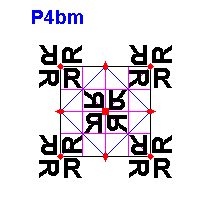 |
100 p4bm (+x, +y, +z); (-x, -y, +z); |
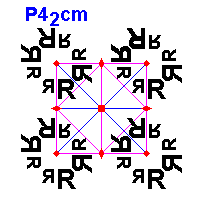 |
101 p42cm (+x, +y, +z); (-x, -y, +z); |
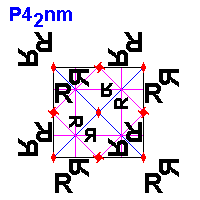 |
102 p42nm (+x, +y, +z); (-x, -y, +z); |
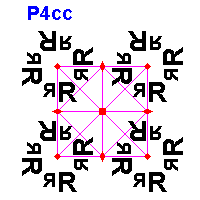 |
103 p4cc (+x, +y, +z); (-x, -y, +z); |
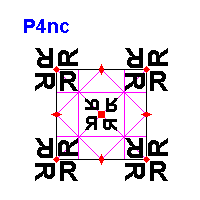 |
104 p4nc (+x, +y, +z); (-x, -y, +z); |
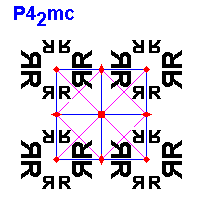 |
105 p42mc (+x, +y, +z); (-x, -y, +z); (-x, +y, +z); (+x, -y, +z); |
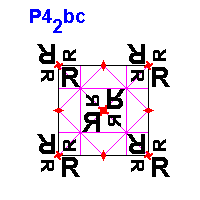 |
106 p42bc (+x, +y, +z); (-y, +x, 1/2+z); |
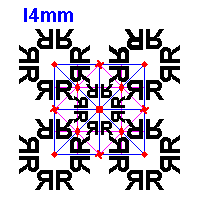 |
107 i4mm Origins: (0, 0, 0 (1/2.1/2, 1/2); (+x, +y, +z); (-x, -y, +z); |
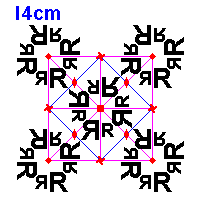 |
108 i4cm Origins: (0, 0, 0 (1/2.1/2, 1/2); (+x, +y, +z); (-x, -y, +z); |
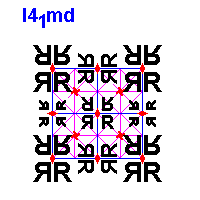 |
109 i41md Origins: (0, 0, 0 (1/2.1/2, 1/2); (+x, +y, +z); (-x, -y, +z); |
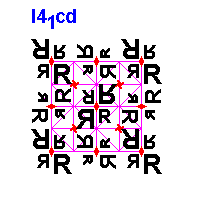 |
110 i41cd Origins: (0, 0, 0); (1/2.1/2, 1/2); (+x, +y, +z); (-x, -y, 1/2+z); |
Return to Symmetry Index
Return to 3d-Space Groups Index
Return to Crustal Materials (Mineralogy-petrology);
Index
Return to Professor Dutch's Home Page
Created 30 March 1999, Last Update 11 June 2020